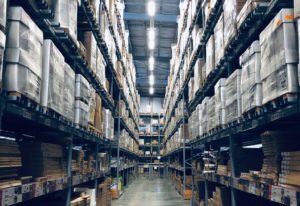Safety stock and inventory management
You have a facility or warehouse where you keep items needed to run your business. It’s where you keep abrasives, adhesives, sealants, tools, and more. Imagine running out of those items, one that’s critical to what you make or build. Your business may grind to a halt, waiting until you can source that needed inventory.
That’s the problem safety stock is meant to address. But safety stock alone won’t completely help your business. You need to successfully manage inventory to keep production going.
What is safety stock?
Safety stock is that extra group of supplies needed to prevent running out of products so you can continue to make and build things for customers. As Accounting Coach called it, it’s a buffer in case the sales of an item are greater than planned and/or the company’s supplier is unable to deliver additional units at the expected time.
Advantages of safety stock
Safety stock has its advantages. But the bottom line is – it enables you to handle supply and demand. When there’s more demand, you have enough of what you need to continue to satisfy customers.

One real-life example in our industry is a manufacturing company that needed a specific filter for its spray booth. When that specific filter wasn’t available from one supplier, the company nearly stopped making products. After calling Elevated Industrial Solutions, formerly known as Lane Supply Company, filters arrived and their stock was replenished.
Let’s use another example outside of industrial supplies – computers. There’s been a shortage. During COVID-19, everyone has been going online – students, employees, and individuals. Many computer stores and computer resellers didn’t have enough safety stock to supply computers to students at every school district in the U.S. They also didn’t have enough stock for everyone hoping to upgrade antiquated computer equipment.
Disadvantages of safety stock
When there’s not enough customer demand, products can languish in your inventory. Sometimes, better products or technology comes along too, making your current supplies unusable. New and improved discs, adhesives, safety gear, and more are released regularly.
Although it’s helpful to have safety stock available, it can be costly and wasteful. It’s also difficult to keep up with and plan, especially if you’re not an enterprise-sized business.
Suppliers can manage safety stock and inventory
Someone else, such as a supplier like Elevated, managing your inventory takes care of many of the safety stock issues. In fact, it can help streamline your business. Using suppliers to manage your inventory and safety stock does the following:
- Depending on the supplier agreement, you can keep unneeded supplies off your books, paying for what you need when you need them – reducing costs and eliminating waste.
- Reduces liability if demand suddenly drops. If something does happen and supplies aren’t needed, it’s not your issue – it’s your supplier’s, such as Elevated. That saves you money.
- Enables you to receive recommendations for better products that save you time and money or improve the quality of your products. These recommendations could equal more revenue.
- Provides advanced notice of pricing changes or supply shortfalls so you can adjust your budgeting, manufacturing, and delivery promises. Suppliers, because of relationships, understand what’s happening so you’re never surprised. (Surprises in manufacturing can be expensive!)
- Saves money and time on personnel and warehouse space to maintain and control supplies you may not need for a while.
- Optimizes your facility or plant so you can focus on what you do best – making great products.
A magical combination

Safety stock and inventory management together are a magical combination. When suppliers help with both, you have a team handling vendor relationships, providing space, managing inventory, and ensuring you have the supplies you need … without paying for that entire team. Your supply chain is streamlined. Safety stock and inventory management, when put together, take the worry out of keeping your company and projects moving. Best of all, with that extra team behind you, you can compete like your company is larger than it is.
Saving money, reducing waste, improving products, and increasing revenue are all good reasons to invest in suppliers that can handle your inventory.
Trusting suppliers with many years in the business, a wide variety of products, and relationships that span the supply spectrum ensure you’re getting the right vendor.
Finding the right supplier
There are traits that some vendors have that make them better than others. Here are just a few of the characteristics you should be looking for:
- Provide expertise to save you time and money while improving the quality of your products or service
- Have great customer service, taking the time to answer questions
- Use a wide variety of vendors with fantastic relationships, where getting those specialty items is easy
- Fast shipping to get what you need when you need it
- Do the right thing for you and your company, caring about you and your business
Elevated is the right supplier
Elevated has been in business for more than half a century. We have employees who’ve been in the supply business for nearly as long, recommending products to save time and money. And we have established relationships with vendors who provide the supplies you love, including those specialty items, that save you time and money while improving your products.

7 deadly sins of compressed air

Get your compressors ready after the holidays
